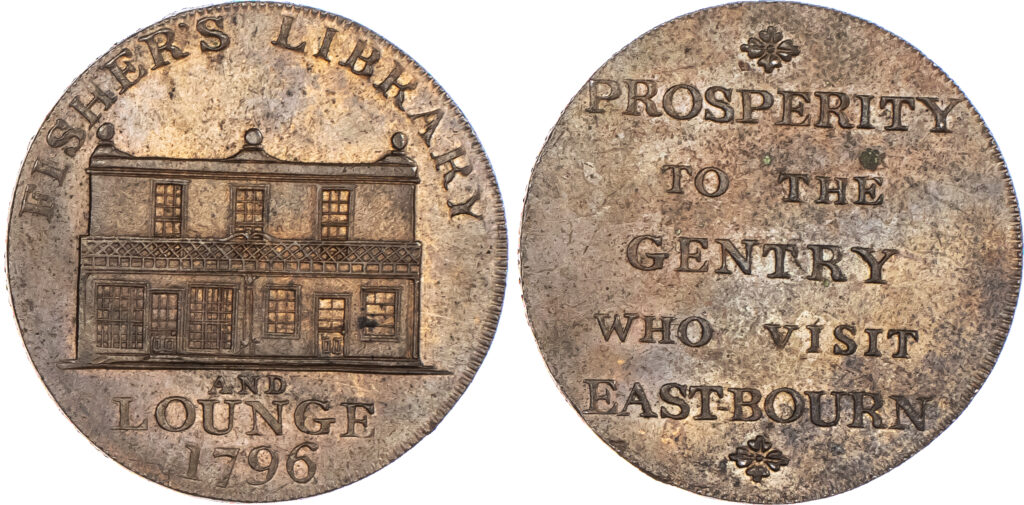James Dally was a linen draper in Chichester, with a shop near to the High Cross and in 1794 he issued his own Halfpenny that he could give in change. His little copper coin is about 27mm in breadth and features Queen Elizabeth I and the Bishop Storey’s High Cross which was just by his shop.

In the 1790s there was no official small copper change in the country. Britain was at war with France and the price of copper had risen causing the regal issue to ‘vanish’. This caused tremendous hardship for small merchants and shop keepers throughout the country, for how were they to conduct the everyday transactions of selling small goods if they had no change. The Crown was busy with the war and any ‘unofficial’ production of coin of the realm would be seen as forgery which was punishable by hanging !. Eventually a Welsh mining company hit upon the idea of turning their copper straight into pennies and halfpennies but calling them ‘tokens’ that were redeemable in official coin – thus avoiding the forgery. As they were the correct weight, no one bothered and in the space of a year, merchants in every town in England started issuing their token pence !
On the edge of James Dally’s halfpenny, pictured here, is the legend PAYABLE AT DALLYS CHICHESTER, thus stating that it was redeemable as a halfpenny and not an actual halfpenny !
This solved the lack of small change in the 1790s and for ten years, until the government got its act together after the war, and issued official copper coins. Throughout the 1790s it is these copper ‘token’ pence and halfpence one would have had in one’s pocket, all over the country, as small change.
There were many merchants in Sussex issuing their own coppers, particularly in the towns of Brighton and Chichester, but also other smaller localities such as East Grinstead, Horsham, Lamberhurst, Northiam, Winchelsea, Hastings and Eastbourne
The halfpenny token used at Eastbourne in 1796 was issued by Frederick Fisher who sold stationary and was also an auctioneer. His establishment was a fashionable ‘library’, a sort of reading room which the visiting gentry would frequent – which explains the rather obsequious message on his token. Fortune did not smile on him as by 1803 he had gone bankrupt but he then moved to London and became an estate agent!

The token for Brighton is an enigmatic piece – probably issued for collectors at the time, but at the same time could be used as change, this token features an officer conducting an attack and on the other side ships and trophies of war – obviously a references to the war with France.

The tokens for all these Sussex localities can be seen in an auction of 18th. century Tokens being held by A H Baldwin & Sons on the 25th. of May. This is one of the finest collections of these tradesmen’s tokens to come onto the market in many years and each piece can be viewed on https://thestrand.com/departments/coins#upcoming-auctions They provide a marvellous window into this last decade of the eighteenth century and almost every English town is represented in this collection.
Every English county is represented and nearly every English city and market town has a merchant or shopkeeper issuing their own coins and for ten years it was a truly a coinage ‘of the people, by the people, for the people’.


